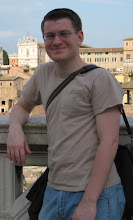 The pantheon is a particularly fascinating place for the examination of representations of power in Rome. Pan-theon literally means all gods and the temple was constructed to be a place to honor all of ancient Rome's many deities. According to our Eyewitness guide, the pantheon was originally constructed by M. Agrippa during his third and final consulate in the twenties BC (1). Marcus Agrippa was a contemporary of Caesar Augustus and served as a general for him, winning a number of important battles. He was elected as one of the two consuls of Rome in 37 BC. He served as consul twice more. First, M. Agrippa served in 28 BC with Octavian and second in 27, again with Octavian. In 27 BC Octavian received the title Augustus and became the first emperor of Rome.
The pantheon is a particularly fascinating place for the examination of representations of power in Rome. Pan-theon literally means all gods and the temple was constructed to be a place to honor all of ancient Rome's many deities. According to our Eyewitness guide, the pantheon was originally constructed by M. Agrippa during his third and final consulate in the twenties BC (1). Marcus Agrippa was a contemporary of Caesar Augustus and served as a general for him, winning a number of important battles. He was elected as one of the two consuls of Rome in 37 BC. He served as consul twice more. First, M. Agrippa served in 28 BC with Octavian and second in 27, again with Octavian. In 27 BC Octavian received the title Augustus and became the first emperor of Rome.The original Pantheon was destroyed in a fire in 80 AD during the brief reign of the emperor Titus and then rebuilt by the emperor Hadrian. The original plans from M. Agrippa's Pantheon were reused by Hadrian and the building still bears a prominent inscription across its famous portico crediting him for the design of the building. Hadrian's building is what stands today.
While the Pantheon began as a temple for the worship of all of the many gods of Roman mythology, it became a church for the worship of only one god in the seventh century AD when it was given as a gift from the Christianized Byzantine Empire to the Vatican. The structure was rededicated as a church and the quality of its preservation is often credited to the Catholic Church. Both the interior and the exterior of the Pantheon have been altered by the groups that have controlled the Pantheon throughout history. Pope Urban VIII added two turrets to back of the portico in eighteenth century. The turrets were removed in the nineteenth century. The turrets, despite their hideousness, did make the Pantheon look more like a Christian church.
 Inside, the Pantheon is littered with the influence of history. Around the circular interior of the Pantheon there are seven indented alcoves (the eighth would be the entrance) and each is used much like the small chapels inside many of the larger churches in Rome. Several of these chapel-like structures have been used to inter elite Romans. The Renaissance painter and architect Raphael was laid to rest in one of these
Inside, the Pantheon is littered with the influence of history. Around the circular interior of the Pantheon there are seven indented alcoves (the eighth would be the entrance) and each is used much like the small chapels inside many of the larger churches in Rome. Several of these chapel-like structures have been used to inter elite Romans. The Renaissance painter and architect Raphael was laid to rest in one of these in the sixteenth century. In the nineteenth century, Victor Emmanuel II, the first king of a unified Italy, was also laid to rest in the Pantheon. Victor Emmanuel's son, Uberto I, the second king of a unified Italy also has a sarcophagus in the Pantheon.
in the sixteenth century. In the nineteenth century, Victor Emmanuel II, the first king of a unified Italy, was also laid to rest in the Pantheon. Victor Emmanuel's son, Uberto I, the second king of a unified Italy also has a sarcophagus in the Pantheon.The Pantheon, a quintessentially Roman building, has thus become an important site for the expression of power in Rome. Because it is a building that has been a notable part of the cityscape for almost two millennia, to be able to change the physical appearance of both the inside and outside of the Pantheon not only indicates the possession of a great deal of power, but also produces an expression of that power likely to last an extremely long time. The sense of permanence that the Pantheon lends to the expression of power is likely part of its appeal for the powerful of Roman history.
1. Fiona Wild, ed., Eye Witness Travel Rome (London: Dorling Kindersley Limited, 1993), 2007 edition, 110-111.



No comments:
Post a Comment